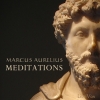
Much of our stress comes from thinking about the past or worrying about the future. When we live in the present moment and our attention is focused on what we are doing right now, there is no room for anything else to enter into our thinking. There’s little room for regrets, worrying about fears, or other stressors.
To be mindful means to focus your attention on the here and the now. It means being gentle with ourselves while remaining non-judgmental of our shortcomings, difficulties, or differences.
Mindfulness in the everyday can be as simple as having a shower with your focus solely on what you are doing, what the water feels like on your skin, the smell of the shampoo etc.
When other thoughts come into your mind, mindfulness asks that you just notice the thoughts and let them pass, bringing your attention back to the present without engaging in the thoughts.
A short mindfulness of breath meditation:
1. Sit comfortably in your chair with your eyes closed and your back reasonably straight, well supported by the seat.
2. Direct your attention to your breathing without trying to change it. Notice what happens to your body when you take a breath in and the relief that you feel when you breathe out.
4. Continue this for several minutes. When thoughts, emotions, physical sensations, or external sounds occur, simply accept them, allow them to come and go without judgement, and then let them go.
5. If you notice your attention has drifted off and become engaged in thoughts or emotions, simply bring it back to your breathing.
6. After a couple of minutes of paying attention to your breath, you can begin to open your eyes and orient yourself back into your surroundings.
Remember, it’s completely normal and natural for thoughts to arise and for your attention to follow them. No matter how many times this happens, just keep bringing your attention back to your breathing.
By practicing this exercise multiple times a day, several days a week, you can learn to ground yourself and your emotions by bringing it back to the present moment… but it takes lots of practice!

Letting go of worry
As I’m sure you have found with your own experience, worrying is unhelpful and has little use or value. So here are several ways for us to practise letting go.
Acknowledge it
Firstly, it is important to be aware of and acknowledge the presence of worry. We can’t let it go if we don’t know we are doing it in the first place. This requires us to check in with ourselves by noticing and acknowledging our worries, without judging them and without placing a value on them.
Delay it
Delaying worry is a form of letting go. To do this, you make a decision not to worry about something at that particular moment. Instead, you decide to bring your attention back to the present with the aim of going back to the worry later.
The ultimate aim is to let go of your worries indefinitely, thereby not planning to return to them later. However, this takes a lot of practice and is centred around a person’s belief that their worries are not useful and will not change a situation or its outcome.
Become the observer
At times, people have found it helpful to say to themselves “here comes a worry” or “I am noticing that I am worrying”. This gives them a sense of distance from the worry thought itself by making them the ‘observer’ rather than the ‘worry-er’.
Do not respond to your worries
Another method of letting go is by not responding to your worries. In fact, don’t try to chase them away or try to control them. Controlling and getting rid of worries is like pushing a blown up beach ball underwater. You know what happens? You can only push it down for so long before it flings back in full force.
That’s what happens when we try to push our worries away. Instead of pushing them away, it may be helpful to try and observe them with interest and curiosity. Identifying the thoughts, feelings, and bodily sensations that come up as the worry thoughts enter may be a gentle way of taking a step back from our worries.

Imagine your worries drifting away
After fully acknowledging, observing, and describing the worries, we can then decide to let them go. We can do so by gently imagining that the worries are like clouds in the sky, just passing us by, moving slowly across.
Or, we can imagine that we are standing over a stream and every time we experience a worry, we label it as a worry, put it on a leaf and watch it float down.
The aim of these exercises is to release the worries, rather than pushing them down. As we are releasing ourselves from our worries, we may choose to say :“my worries are not facts, truths or my reality. They are just thoughts and they cannot hurt me. They are not helpful, so I will just let them go”.
Be focused on the present
Once you have told ourselves to let the worries go or pass, bring your attention to the present moment. When you worry, where are you? Not in the present I bet.
We tend to be focused on the future, focusing on all the bad things that could happen… or we could be caught up in the past? Instead if we focus on the small things happening in the present moment, we become grounded and worries naturally disappear.
Accept your wandering mind
When being focused on the present, people might get frustrated when they find their minds wandering away from their focus on their bodily sensations and back to worrisome thoughts.
This is natural and normal. It is important to congratulate yourself for recognising your mind has wandered and just return your attention to the present again. Do this as often as you need.
Worrying can be very time consuming and exhausting but by using the above strategies, you may begin to take back control of your mind!










